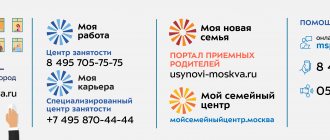The job description of a speech therapist is a legal document that defines the main parameters of the specialist’s activities. It sets out his labor functions, the range of tasks for which he is responsible, the opportunities provided to him by the employer, and other similar points. Correctly drawn up instructions help to formalize labor relations, relieving the parties of the need for frequent individual consultations on labor issues.
- Form and sample
- Free download
- Online viewing
- Expert tested
FILES
Sample job description for a speech therapist
General section
- A candidate for the position of speech therapist must meet the following criteria:
- higher education in a pedagogical profile in the field of “Speech Therapy” or “Defectology”;
- successfully completed medical examination;
- work experience in the profile of at least one year.
- The speech therapist reports to the head of the institution.
- A speech therapist is accepted into his position, as well as dismissed from it, by order of the head of the institution.
- In the absence of a speech therapist (vacation, treatment, etc.), his functions are transferred for a certain period of time to another specialist determined by the head of the institution.
- A specialist in this position must understand:
- specialized legislative and regulatory framework;
- industry rules, including ethics;
- standards of interaction with visitors, including in terms of receiving and processing information from patients with speech impairments;
- analysis of data on visitors based on relevant medical documents;
- methods of diagnosis when working with specialized visitors;
- methods for drawing up individual recommendations for correcting identified defects;
- age and gender characteristics of visitors that influence their speech;
- methods of interaction in work on visitors with other specialists;
- standards for working with relevant documentation;
- theoretical and practical standards of defectology;
- methods of prevention and correction of speech defects;
- technical and fire safety standards;
- sanitary and hygienic standards.
- The speech therapist is guided by:
- the current legal framework;
- industry regulations;
- documents of the institution;
- the contents of this instruction.
Functions
The speech therapist is responsible for the following range of tasks:
- Consulting visitors, as well as their legal representatives, within their competence.
- Filling out the necessary profile documentation.
- Collaborate with other professionals to assist visitors.
- Receiving and processing information on patients.
- Establishing and maintaining contacts with patients who have speech problems.
- Conducting primary and secondary examinations of visitors, as well as referring them to other specialists for in-depth research.
- Making a diagnosis for visitors, justifying it and documenting it.
- Identification of factors influencing defects in patients.
- Selection and justification of rehabilitation measures, as well as their possible adjustment if necessary.
- Compliance with labor protection, sanitation, and fire safety standards in your premises.
- High-quality use of protective clothing and tools provided by the institution.
Responsibility
A speech therapist may be responsible in the following situations:
- For material damage received by the employer through his fault - within the limits given in the relevant legislation.
- For improper performance of one’s duties - within the limits specified in the relevant articles of labor legislation.
- For violations of current regulations and laws committed during the performance of core functions - within the limits set forth in the relevant articles of current legislation.
Rights
The speech therapist is endowed with the following set of rights:
- Propose measures on possible ways to improve labor procedures within the boundaries of their responsibility.
- Participate in meetings of the institution’s labor staff.
- Require management to create and maintain conditions necessary for the quality performance of professional duties.
- Get acquainted with draft documents affecting the scope of professional activity.
- Receive from other employees of the institution data required in their work activities.
Working conditions
Features of the work activity of a speech therapist are as follows:
- A specialist can be involved in work on holidays and weekends, receiving appropriate additional payments from the employer.
- A specialist must undergo specialized advanced training courses (at least once every five years).
- A specialist can go to congresses and conferences in his field of study in the manner specified in the relevant documents of the institution.
- During the period of work, the specialist is provided with special clothing and the necessary tools at the expense of the institution.
- The specialist undergoes regular medical examinations in the manner prescribed in the relevant documents of the institution.
- The specialist undergoes regular re-certification in the manner specified in the institution’s documents.
Article:
In recent years, the quality of education at school has noticeably decreased, especially in Russian language and literature.
A sixth grader reading syllables is not uncommon. Children do not like to read and do not want to. By the end of school, only a third of them can thoughtfully read a text and extract useful information from it, speak and write correctly, and master the norms of the language. More than half of graduates cannot express their thoughts consistently and competently. As many years of study have shown, one of the reasons for children’s underachievement in the Russian language and in mathematics and other subjects is insufficient development of oral speech, which prevents them from mastering correct reading and literate writing. By the age of five, a child should normally master the entire structure of language, that is, the sound and semantic aspects. This means that the child speaks clearly, competently, distinguishes speech sounds, and has a sufficient vocabulary. Competent speech is an indicator of a child’s mental development. At the age of six or seven, speech develops very rapidly.
SPEECH DEVELOPMENT GOES IN TWO DIRECTIONS:
- the vocabulary is intensively developing and the morphological system of the language spoken by others is being acquired;
- speech ensures the restructuring of cognitive processes (attention, perception, memory, grammatical structure of speech, as well as thinking).
At the same time, the expansion of the vocabulary, the development of the grammatical structure of speech and cognitive processes directly depend on living conditions and upbringing. Therefore, at this age it is very important to organize classes on speech development, especially for children who have speech impairment. Such classes are conducted at school by a speech therapist.
Speech therapy translated from Greek means “education of correct speech.” The subject of speech therapy as a science is speech disorders and the education of persons with speech disorders. The object of study is a person. Like all sciences that study humans, speech therapy is a synthetic science. A speech therapist teacher is a teacher who must have knowledge related to special branches of pedagogy (typhlopedagogy, deaf pedagogy, oligophrenopedagogy), methods of teaching the native language and mathematics, general and special psychology, neuropsychology, neuro- and psycholinguistics and other sciences. In order to successfully engage in the correction and prevention of speech disorders, to comprehensively influence the individual, it is necessary to know the symptoms of speech disorders, their etiology, mechanisms, the ratio of speech and non-speech symptoms in the structure of speech disorders.
At school, the speech therapist teacher is an expert in academic performance in the native language. He identifies children with deficiencies in oral and written speech and organizes classes to prepare the prerequisites for the child’s full teacher education. In his classes, a speech therapist teacher solves not only speech problems themselves, but also shapes the educational activities of children. If in preschool age the child’s main activity is play, then at school he should be engaged in educational activities. According to M. Bezrukikh, 78% of 6-year-old children are not ready for school, and for 7-year-olds - 20-30%. According to the results of observations of first-graders at our school, all 7 children who were under 6.5 years old on September 1 had psychological problems: 5 are disinhibited, 1 often cries, 1 is withdrawn and touchy, 1 cannot remember letters, 1 has bouts of vomiting.
Modern psychological and pedagogical research indicates that one of the most important aspects of psychological readiness for school is a certain, sufficient level of voluntary or volitional development of the child. It is also known that the transformation of involuntary functions and processes into voluntary ones turns out to be the main line in the psychological mechanism of development of the child’s personality.
Even in gifted children, a fairly high level of development of cognitive processes and speech and imagination is combined with insufficient development of volition. This is recorded both among children entering school and among students in grades 2-3. An insufficient level of arbitrariness is manifested in the peculiarities of the design of written work (dirt in the notebook, inability to apply pressure to the pen, a very slow pace of writing) and in the presence of special errors that are neither spelling nor dysgraphic, typical for children with speech impediments:
When writing
1) replacing letters (k-p); 2) copying with errors from the board; 3) cannot retain and reproduce elements of speech (sounds, words, sentences); 4) hand tremor when writing; 5) the appearance or increase of errors towards the end of the work; 6) difficulties in mastering the alphabet; 7) lack of spelling vigilance.
While reading:
1) repeated reading of a line, skipping a line, reading a line located above; 2) loss of a line when reading; 3) reading with errors; 4) low reading speed; 5) poor memorization; 6) does not know how to highlight the main thing in what he read.
Mathematics:
1) arithmetic error; 2) inability to solve problems. In modern conditions of preschool education, the formation of true arbitrariness is difficult. In children's institutions, the development of voluntary attention is carried out according to the external type, when the goals and objectives of any activity are set by adults, and the child is required to obey norms and rules. True arbitrariness lies in the fact that the child must “master his own behavior, treating himself as if from the outside, viewing himself as a certain object” (Vygotsky). “Speech helps him master this object” (Vygotsky).
At early and primary school age, the word follows the action and records the result. At the next stage of development, speech accompanies action. Then the speech moves to the foreground. The child verbally defines a task for himself and thus regulates and plans his behavior. A 5-6 year old child can practically control his behavior, subordinate his actions to the expectations of the people around him, achieve his goals, overcome difficulties, but at the same time he is easily distracted from his intentions by any circumstance that is attractive to him.
A first grader must be able to separate the main from the secondary and consciously organize his behavior so as not to be distracted from the main thing.
Thus, in order to prepare a child for full-fledged educational activities and to form a creative personality, it is necessary to develop in the child voluntary activity and voluntary behavior, communication, which help children quickly adapt to the student environment and acquire the skill of learning. This can be done on the basis of speech development in speech therapy classes. The size of speech therapy groups (3-6 people) allows for an individual approach to solving the educational problems of each child.
A speech therapist can conduct a detailed examination of the child and identify the reasons for his failure in school. He has the necessary arsenal of tools to help the child, and will be able to give specific advice on teaching each child to his teachers and parents. The examination of first-graders is carried out in early September. Based on the results of an examination of children by a speech therapist and taking into account the recommendations of a neurologist and a speech therapist at the clinic, children are enrolled in speech therapy groups. Children who attended speech therapy kindergartens continue their education at the school speech center, since it is known that general speech underdevelopment is compensated only by the age of 10.
It is important to pay attention to the child’s problems as early as possible. It would be useful to conduct a screening examination of children when enrolling them in school and give parents recommendations on development and upbringing even before entering 1st grade. Many school difficulties can be avoided if parents pay attention in time to the behavior, level of development of thinking and speech in their child. The prognosis for the further development of children with speech impediments is rather favorable, provided that timely, targeted assistance is provided. For example, children who have a reading delay before the age of 10 will most likely not be able to catch up with their peers by the time they leave school without special help. Or maybe they will lag behind. Both parents and teachers must understand that the child himself will not be able to cope with such problems; he needs qualified help from specialists. At school, such a specialist is a speech therapist.
Key points in drawing up instructions
The domestic regulatory framework does not specify the parameters for creating instructions. Therefore, when writing it, employers focus on adapting standard instructions for their needs, in accordance with the principles of office work. These samples are available in two versions: standard and extended.
Mandatory parts of the standard instructions:
- Common parameters.
- Professional features.
- Potential Liability.
- Job opportunities.
This type of instruction is used for most workers, especially in small and medium-sized organizations. In large institutions, as well as when writing instructions for management-level employees, an extended version is used. It adds to the standard sections:
- Features of work activity.
- Rules for performance assessment (KPI).
- Parameters of job interactions.
- Instruction conversion order.
The expanded format allows you to formalize a larger number of labor parameters. The price for this is a reduction in the flexibility of labor relations.
Basic provisions
The introductory part lists the requirements for the candidate’s qualifications, the parameters of his personnel interactions (the procedure for hiring, dismissal, replacement), and the provisions that he should focus on in his work.
The main role is played by the required skills, which are required to ensure that the functions given in the next section are performed at a high level. And criteria based on experience and education make it possible to screen out candidates with an insufficient level of training.
Attention! Job descriptions can be drawn up either in a standard manner or individually. In the first case, the instructions are suitable for any specialist in a certain position, and in the second, they are written for a specific highly qualified worker.
Functions
This part describes the responsibilities assigned to the specialist. There are several conditional groups of these responsibilities:
- The main ones are typical for the profession of any employer.
- Auxiliary - complement the main functions; their scope and complexity depend on the policies and characteristics of the employing organization.
- Basic - included in instructions for any profession: compliance with fire and technical safety standards, labor discipline, etc.
If an employer provides an employee with any valuables (tools, clothes for work, etc.), then the need to treat them with care is specifically mentioned.
Responsibility
This part is reserved for listing possible violations and penalties. Since responsibility is built on the basis of current legislation, the scope and diversity of which take it beyond the scope of the instructions, the section is compiled in a truncated form, with a small amount of specifics.
Rights
The section describes rights additional to those already granted to the employee in Art. 21 TK. As a general rule, the greater the responsibility of an employee, the greater the opportunities he has.
Working conditions
This section is added if the employer wants to identify some specific features in work activity. Traditionally, this includes additional benefits: training at the expense of the employer, free branded clothing, etc. If the work involves a non-standard work schedule, then this point is stated in this section.
Before being put into effect, the instruction must go through a number of approval stages:
- The initially drafted version is shown to a lawyer specializing in labor law and the head of the personnel department.
- The version with their edits is agreed upon with relevant specialists in the area for which the instructions are being drawn up.
- The final version is printed on company letterhead, including official attributes (date of compilation, details of the organization, etc.), and sent for signature to those persons who approved its content.
- At the final stage, signatures are placed by the head of the employing organization and the employee for whom the instructions were written.
Attention! The employee has the right to request from the HR department his copy of the instruction, which can be issued in paper or electronic format. In the second option, personal information is first deleted from it.






